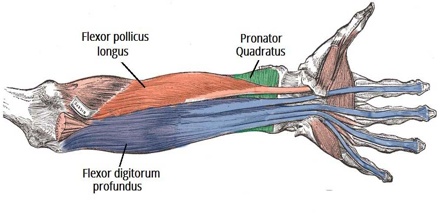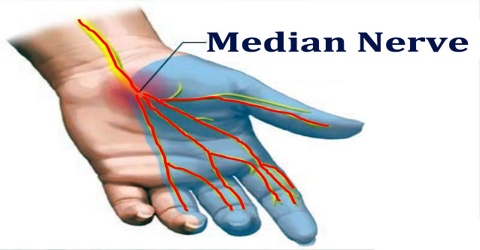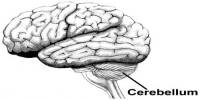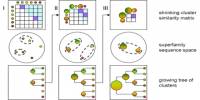Median Nerve
Definition
Median nerve is a nerve which runs through the wrist and into the hand. It provides sensation and some movement to the hand, the thumb, the index finger, the middle finger, and half of the ring finger. It is one of the terminal branches of the brachial plexus that extends along the radial parts of the forearm and the hand and supplies various muscles and the skin of these parts. It arises from the brachial plexus by two large roots, one from the lateral and one from the medial cord.

Nerve roots of the median nerve are from the ventral rami of the C6-T1 nerves. The median nerve is formed by the unification of the medial and lateral cords. It can be seen as the central line of an ‘M Shaped’ brachial plexus, the cords of which surround the axillary artery.
Median nerve originates from the lateral and medial cords of the brachial plexus, and has contributions from ventral roots of C5-C7(lateral cord) and C8 & T1 (medial cord). The median nerve is the only nerve that passes through the carpal tunnel. Carpal tunnel syndrome is the disability that results from the median nerve being pressed in the carpal tunnel.
Structure and Functions of Median Nerve
In the upper arm and near the shoulder, the median nerve branches off of the brachial plexus. A portion of its path covers the medial side of the arm, near both the biceps brachii and brachialis muscle. Median nerve also extends downward through the forearm, ultimately traversing the carpal tunnel as it enters the hand. It gives off an articular branch in the upper arm as it passes the elbow joint. A branch to pronator teres may arise from the median nerve immediately proximal to the elbow joint.

It arises from the cubital fossa and passes between the two heads of pronator teres. It then travels between flexor digitorum superficialis and flexor digitorum profundus before emerging between flexor digitorum superficialis and flexor pollicis longus. It also innervates a number of muscles along the entire length of the arm. Also due to its length, the median nerve is susceptible to a number of conditions.
Bifurcation of the median nerve typically occurs after the nerve exits the carpal tunnel; however, in a small percentage (5%-10%) of individuals, the median nerve bifurcates more proximal in the carpal tunnel, wrist, or forearm.
Median nerve innervates the majority of the muscles in the anterior forearm, and some intrinsic hand muscles. It innervates some of the muscles in the hand via two branches. The recurrent branch of the median nerve innervates the thenar muscles associated with movements of the thumb. The palmar digital branch innervates the lateral two lumbricals these muscles perform flexion at the metacarpophalangeal joints of the index and middle fingers.
Reference: healthline.com, thefreedictionary.com, kenhub.com, wikipedia.
















